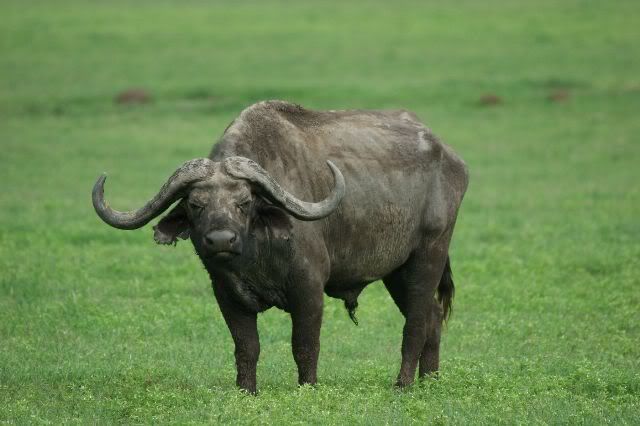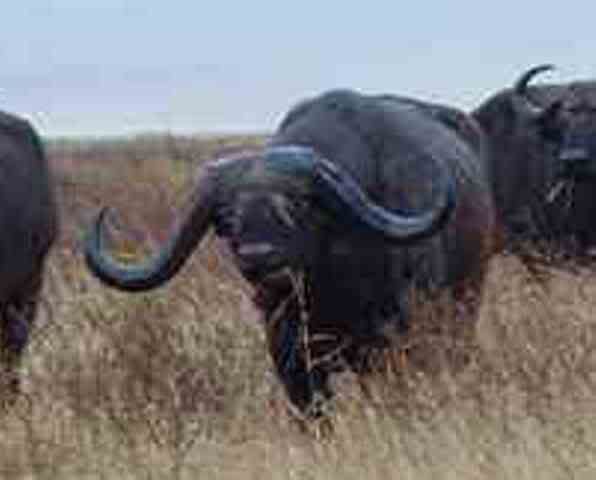| bulldog563 |
| (.400 member) |
| 12/09/07 01:48 PM |
|
|
Quote:
What I would like to see discussed are the parameters and techniques for evaluating a buff on the hoof.
Can somebody explain "soft bosses" and give a rundown of how you estimate the spread of the horns by field observation?
Obviously, I'm not promoting any of the buffs in my photos. I threw them up to learn something about the question I just asked.
So how does a hunter "Rate this Buff"?
Thanks,
Curl
My way of evaluating a bull are as follows (in order of importance for me);
1. Are Bosses large and fully developed. Can not have any softness to them at all. This is linked to the bulls age so no young bull is, imo, a trophy.
2. Depth of curl and spread are about equal in my book. Great if a bull has both.
Hooks (ie are horns broomed or still sharp/pointed) are not that important to me. I actually prefer a bull that has had time to broom off his points as it shows age even though it will not score as well in SCI as a younger, but still fully developed bull.
Soft Bosses:
Like I said above, a young bulls bosses start out soft and as it ages will harden up from back to front (with the front being the last part to harden in the average bull). Soft bosses will generally be smooth (although some very old bulls can have worn their bosses smooth over time. This is easy to tell apart though as the old bull will have almost shiny bosses with a young bull's bosses will be a matte kind of tone or whatever you want to call it) and almost look like tight, dark skin over meat. If you could touch it, it would give a bit under finger pressure. Also most tend to have hair between the bosses but this is not a sure indicator as many fully mature buffalo will retain a thin strip of hair between their hard bosses (but generally a bull with a lot of hair up front or between bosses is young). It is nice if a mature bulls bosses are hard up against each other but some bulls will always have some separation. If you were to boil out a young bulls skull, all the horn material that wasn't hard would be gone leaving a large gap in the middle and space in front (although a skilled taxidermist could build them back as many do every year
 ).
).So basically, smooth hairy bosses are soft (generalisation and oversimplified as every bull is different).
Spread:
I have found the easiest way for me to roughly estimate spread is to look at how far outside of the ears the horns extend. If in line with ears then bull is probably roughly 36-38" depending on how big the particular bulls ears are and what position he has them in when you look at him. Anything outside of that is easier to guesstimate then looking at the horns as a whole. Some people use hand spans outside ears but after seeing enough bulls in pictures and/or in real life you seem to get an idea of the scale/etc. I am sure someone has a better system then this but this is just what works for me (and I am by no means an expert at Buffalo trophy judgment).
Some more pictures for reference;

Bull taken by my dad in Masailand, TZN Nov 2006. Measured 45.5" roughly.
Next two pics are mature buffalo from the Ngorogoro (sp?) crater in TZN. Monsters. First pic you can clearly see that a mature bull can have a sizable gap between bosses. On this bull, they will almost definitely never grow together. Just the way he is put together. Also, you can see how he has broomed down his hooks over time. Would be an excellent trophy in my book. You can really see how his condition is deteriorating (ie, very old) with the exposed hip bones/etc.

